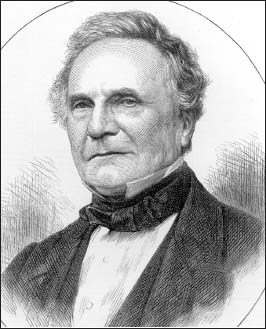Math in ComputingMechanical and Electronic Calculating Devices |
What was the difference engine? |
Because of its automatic sequential approach, the difference engine is thought of by most mathematical historians to be the precursor to modern computers. Johann H. Müller, an engineer in the Hessian army, first developed the concept in 1786. His idea was to have a special machine that would evaluate and print mathematical tables by adding sequentially the difference between certain polynomial values. But he could not get the funds to build the machine.
Müller’s idea was soon lost before it was resurrected in 1822, when Charles Babbage obtained government funds to build a programmable, steam-powered prototype of Müller’s device (for more information about Babbage, see below). Because of technical limitations, funding cuts, and Babbage’s interest in a more advanced device of his own design, Müller’s difference engine was only partially completed. Eventually, Swedish inventors George Scheutz (1785–1873) and his son Edvard (1821–1881) would in 1853 build the difference engine, the first calculator with the ability to print.

Recognized for his connection to the famous difference engine, English mathematician Charles Babbage had to abandon his elaborate plans for a mechanical computer because the device was simply too expensive.
